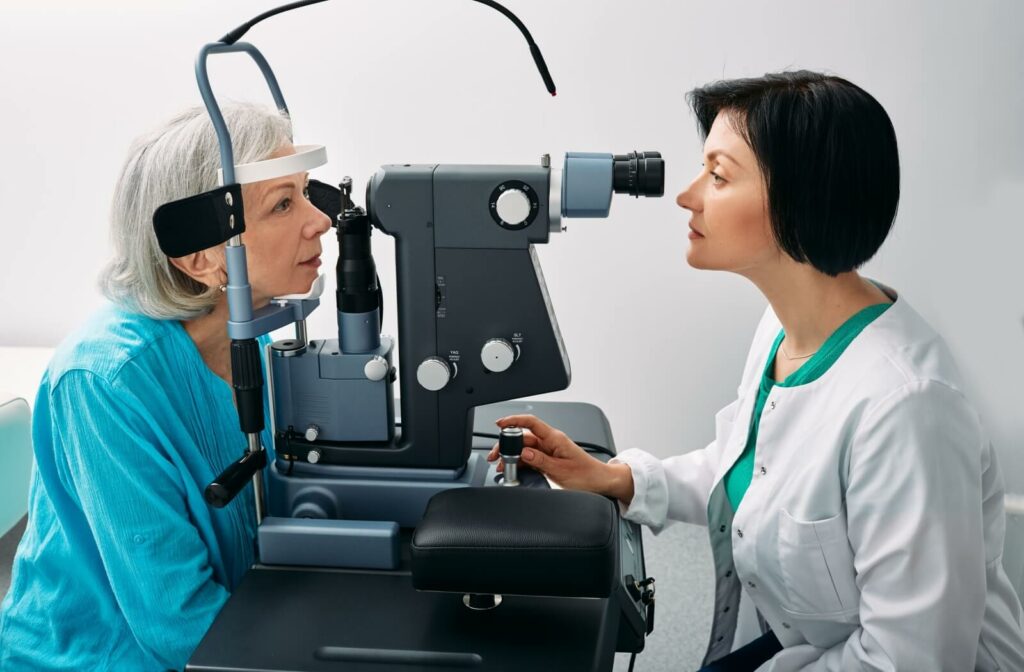Just How an Eye Doctor Can Change Your Vision Health in Chino
Just How an Eye Doctor Can Change Your Vision Health in Chino
Blog Article
Checking Out the most up to date Technical Improvements in Optometry and What They Mean for Eye Doctors
From the precision of Optical Comprehensibility Tomography to the nuanced understandings provided by AI-driven diagnostic devices, these innovations are establishing brand-new requirements in client assessment and treatment. As these improvements penetrate the method, eye doctors are encountered with the difficulty of welcoming these devices to improve patient results.
Developments in Diagnostic Tools
Progressing the area of optometry, advancements in analysis tools have actually changed the method eye care professionals evaluate and detect visual problems and eye conditions. The previous years has seen significant technical improvements, making it possible for more precise and thorough analyses.
An additional secret development is the introduction of advanced corneal topography systems, which map the surface area curvature of the cornea with accuracy. These devices are especially beneficial for fitting get in touch with lenses and identifying corneal conditions. Electronic retinal imaging has actually transformed conventional ophthalmoscopy, supplying detailed, panoramic views of the retina that assist in detailed visual evaluations.
The development of wavefront aberrometry has additionally been important, making it possible for the evaluation of refractive errors with unrivaled precision (Opticore Optometry). This innovation helps in personalizing rehabilitative lenses and enhancing medical outcomes for refractive surgical treatments. Collectively, these analysis innovations encourage eye doctors to deliver superior person treatment, making sure early intervention and tailored therapy approaches, inevitably boosting aesthetic health end results
AI in Individual Monitoring
Structure on the foundation of advanced analysis tools, the incorporation of synthetic intelligence (AI) in patient monitoring stands for a transformative jump for optometry. AI systems are progressively used to improve efficiency, accuracy, and customization in person treatment.
Additionally, AI-driven platforms assist in structured client communications and administrative procedures. Automated scheduling, virtual consultations, and customized follow-up strategies not just improve person contentment but likewise enhance time management for experts. These systems can triage patients based upon the necessity of their conditions, guaranteeing that those in crucial requirement obtain prompt interest.
In addition, AI enhances decision-making by giving optometrists with evidence-based recommendations and therapy pathways. By integrating data from electronic health and wellness documents, AI tools provide understandings that educate clinical choices, minimizing the threat of mistakes and boosting patient outcomes. As AI remains to develop, its duty in client management will likely broaden, improving the landscape of optometric care.
Developments in Retinal Imaging
In the realm of optometry, retinal imaging has witnessed impressive technical developments that are improving diagnostic capabilities and person care. Advancements such as Optical Coherence Tomography (OCT) and fundus digital photography have revolutionized how eye doctors visualize and assess the retina.
Boosted imaging techniques like OCT angiography are additional refining analysis precision. Opticore Optometry. Such improvements facilitate the identification of min retinal modifications that could symbolize disease progression.
Additionally, innovations in synthetic intelligence are boosting retinal imaging by enabling automated evaluation of large datasets. These systems aid optometrists in identifying patterns indicative of pathology, consequently enhancing analysis precision and performance. Jointly, these innovations are transforming retinal imaging right into a keystone of modern eye care, improving results and increasing therapeutic opportunities.
Teleoptometry's Expanding Duty
Teleoptometry is progressively becoming a crucial part of eye treatment, driven by developments in digital communication and diagnostic devices. This is especially valuable in underserved and country areas where accessibility to specialized eye care is commonly restricted.
The assimilation of synthetic intelligence (AI) more improves teleoptometry, enabling the evaluation go of visual data and helping in the detection of eye conditions such as glaucoma and diabetic person retinopathy. AI-powered algorithms can swiftly translate complicated imaging data, providing eye doctors with useful understandings that boost medical decision-making.
Furthermore, teleoptometry supports connection of care via seamless combination with digital health documents (EHRs), allowing optometrists to keep detailed client backgrounds. This guarantees that clients get consistent and personalized care also when speaking with various professionals.
Despite these advantages, difficulties stay, including guaranteeing information security and taking care of individual expectations. Teleoptometry stands for a significant stride in the direction of more available, reliable, and patient-centered eye treatment. As technology develops, its duty is positioned to increase further.

Future Trends in Eye Care
A myriad of ingenious fads is readied to improve the future of eye care, driven by technical developments and the advancing needs of patients. One considerable pattern is the assimilation of synthetic intelligence (AI) in diagnostics, which promises to enhance the accuracy and performance of eye exams. AI formulas can examine huge amounts of data from retinal images, potentially spotting conditions like diabetic person retinopathy and glaucoma earlier than typical approaches.
In addition, personalized medicine is obtaining grip in optometry, with hereditary testing educating tailored treatment plans. This approach intends to enhance client outcomes by customizing interventions to specific genetic accounts. Wearable innovation, such as smart call lenses, is likewise on the horizon, using real-time tracking of intraocular stress or glucose degrees, hence providing continual insights right into eye and systemic health.
The adoption of enhanced reality (AR) and digital truth (VIRTUAL my response REALITY) in training and patient education and learning is an additional emerging pattern. These technologies supply immersive experiences that can improve understanding and abilities both for clients and eye doctors. As these patterns evolve, eye doctors must remain abreast of technological innovations to offer advanced care, guaranteeing improved person results and contentment in the vibrant landscape of eye care.
Final Thought

Jointly, these diagnostic developments empower optometrists to provide exceptional individual care, making certain very early intervention and customized treatment approaches, eventually enhancing visual wellness results.

As these modern technologies proceed to develop, eye doctors need to adjust and integrate them into practice, ultimately enhancing check these guys out operations performance and boosting the requirement of eye treatment supplied to individuals.
Report this page